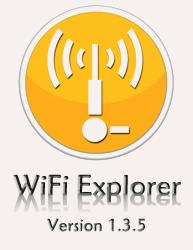

Generally, a signal with an SNR value of 20 dB or more is recommended for data networks where as an SNR value of 25 dB or more is recommended for networks that use voice applications. Filter list of detected wireless networks by specified parameters (SSID/network name, channel. For instance, a received signal of -65 dBm can be considered good at a location that has a noise floor of -90 dBm (SNR 25 dB) but not so much at a location with a noise floor of -80 dBm (SNR 15 dB). Display changes in signal level over time in graphical form.

By now you can conclude that the closer the dBm value is to 0, the stronger the signal is. This will degrade wireless throughput and latency as the retransmitted signals will take up airtime in the wireless environment.Ĭisco Meraki Access Points reference the Signal to Noise Ratio as the indication for the quality of the wireless connection. This provides a more accurate depiction of the health of the wireless signals as it takes the RF environment and ambient noise levels into account. In the context of 802.11 networks, a signal received at -40 dBm (0.0001 mW) would be considered a very strong signal, while a signal received at -80 dBm (0.00000001 mW) would be considered very weak. The further a received signal is from the noise floor, the better the signal quality. Signals close to the noise floor can be subject to data corruption, which will result in retransmissions between the transmitter and receiver. For best performance in a wireless environment, it is key that wireless devices are able to distinguish received signals as legitimate information they should be listening to and ignore any background signals on the spectrum. There is a concept known as the Signal to Noise Ratio or SNR, that ensures the best wireless functionality. The SNR is the difference between the received wireless signal and the noise floor. The noise floor is simply erroneous background transmissions that are emitted from either other devices that are too far away for the signal to be intelligible, or by devices that are inadvertently creating interference on the same frequency.įor example, if a client device's radio receives a signal at -75 dBm, and the noise floor is -90 dBm, then the effective SNR is 15 dB. This would then reflect as a signal strength of 15 dB for this wireless connection. Noise refers to any signal interference that doesn’t come from WiFi sources.


 0 kommentar(er)
0 kommentar(er)
